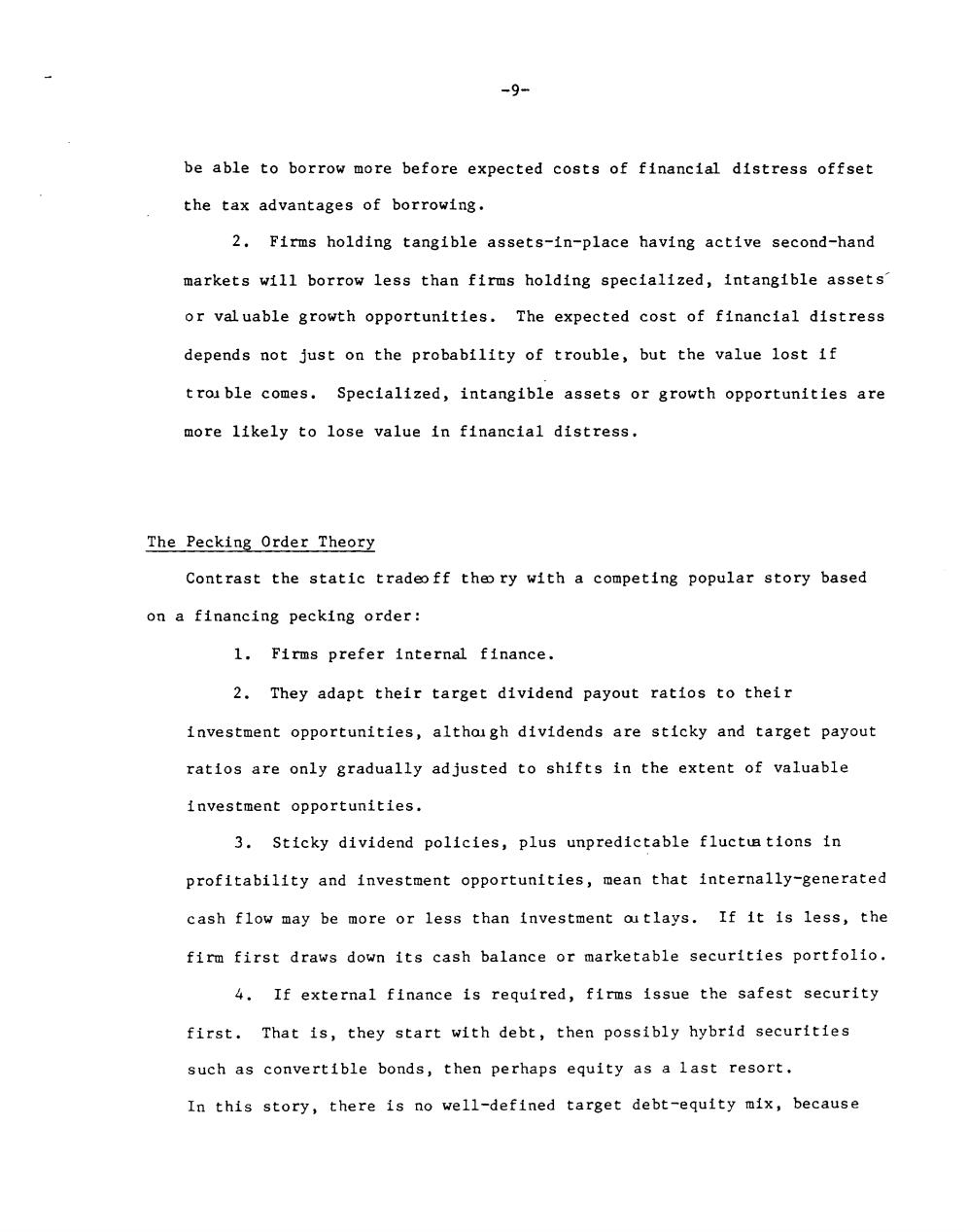正在加载图片...

-9= be able to borrow more before expected costs of financial distress offset the tax advantages of borrowing. 2.Firms holding tangible assets-in-place having active second-hand markets will borrow less than firms holding specialized,intangible assets or val uable growth opportunities.The expected cost of financial distress depends not just on the probability of trouble,but the value lost if tro ble comes.Specialized,intangible assets or growth opportunities are more likely to lose value in financial distress. The Pecking Order Theory Contrast the static tradeo ff theo ry with a competing popular story based on a financing pecking order: 1.Firms prefer internal finance. 2.They adapt their target dividend payout ratios to their investment opportunities,althogh dividends are sticky and target payout ratios are only gradually adjusted to shifts in the extent of valuable investment opportunities. 3.Sticky dividend policies,plus unpredictable fluctu tions in profitability and investment opportunities,mean that internally-generated cash flow may be more or less than investment outlays.If it is less,the firm first draws down its cash balance or marketable securities portfolio. 4.If external finance is required,firms issue the safest security first.That is,they start with debt,then possibly hybrid securities such as convertible bonds,then perhaps equity as a last resort. In this story,there is no well-defined target debt-equity mix,because